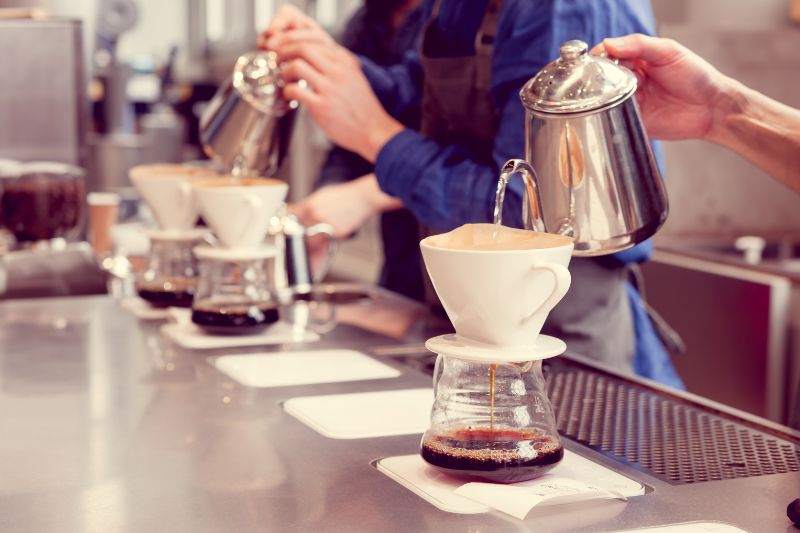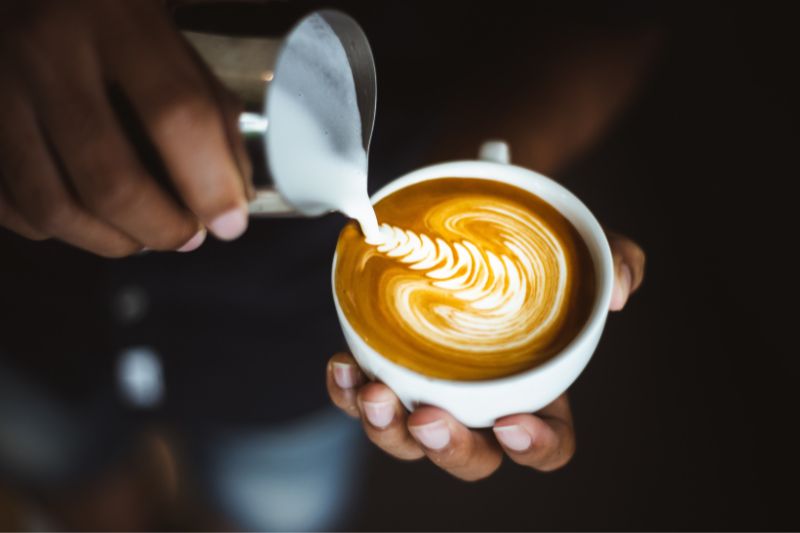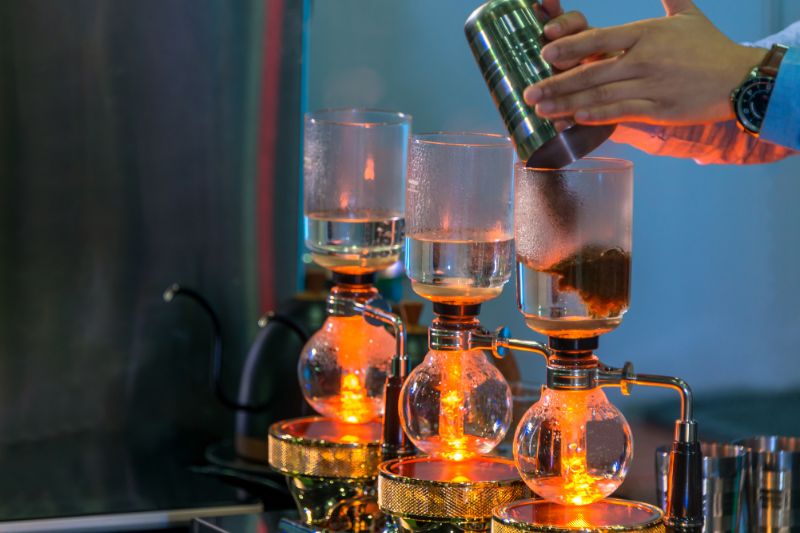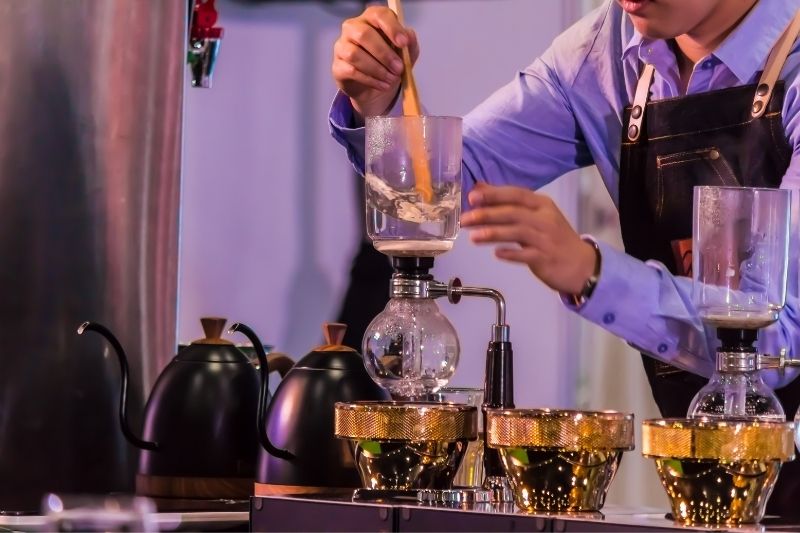You know that favorite brand of coffee or roastery blend you probably have that you absolutely love?
You know exactly which one I am talking about if you have one. In my case, I have a couple of these blends that are my absolute favorites, and I don’t know about you, but they have something "special" that I can’t exactly specify that puts them on a pedestal above all others.
Now, here is how this ties in with specialty coffee and the majority of coffee lovers: We all LOVE a great cup of coffee! So far, so good! But I am sure many of you may have asked yourselves, "Why is this cup so delicious?" I wonder...
Which is also a thing in the coffee industry, as well as today’s topic: Cup tasting!

And of course, we are going to be thorough. We are going to look into how one trains to professionally evaluate coffee, how the unique flavors are put in a manageable order, and... Did you know there was also a championship for Cup Tasters?
Without further ado, let’s get started!
What is Cup Tasting?
So, Cup Tasting is pretty straightforward as a concept! You taste the cups and evaluate them.
But it’s actually much more like playing an instrument (e.g., the piano); there is a lot more than meets the eye, and this is what makes it so intriguing. It’s not just moving your fingers randomly on the board that makes music.
At the very foundation of the concept, you will encounter certain terms that describe the particular aspects of Cupping and Flavor profiles as used in the industry.
To make this much, much simpler, as nobody likes a list of terms, we have already composed an article on the topic, and I will briefly touch on the most important ones.
Should you desire to look into it further, you will find that article right here.
The terms we will need for this post are Acidity, Aroma, Body, Bitterness, Aftertaste, and Flavor. And we will mainly focus on a coffee lover’s knowledge of coffee as opposed to a professional taster’s to make this digestible!
The terms
Acidity
Acidity is a term prevalently used to describe the "pleasantly sour" kind of coffee. What it refers to is the acid content found in the beans before roasting. When the roasting is done properly, it results in a refreshing and fresh taste.
The way it is perceived, however, depends on whether you are in the industry or not. Many times, for non-professionals like your everyday coffee enthusiast, too much acidity means sour coffee, and we tend to mistake that as bitter.
The descriptors start with "fruity" or "citrus" for high levels of acidity, then for moderate levels, move on to "apple", "pear" or "fermented fruit". For low acidity levels, you will hear the words "nutty", "caramel" and maybe "chocolate".
Basically, the very first impression you get from your cup is related to the acidity!

Aroma
Next on our list is Aroma, which has to do with the smell of the coffee. And it is far more relevant and important for professional tasters, as many times they will even smell the beans before grinding them.
The reason it is more important for a professional is their prior experience with aromas and flavors and, hence, their ability to identify and ascertain their quality.
If you don’t have that much experience with different coffee aromas, a complex smell will not really have an impact on you. It will just register as pleasant or not, and that’s about it! How one learns to identify them will be touched on shortly.
Body
The body is related to the mouthfeel of the cup, whether you experience it as light or heavy. Imagine comparing a glass of normal milk to a glass of skim milk. Just by the texture of it, you can tell which is which.
The same principle applies to coffee cups. Although the differences are not that large (unless you compare espresso to hand-drip coffee), the body of the drink has a direct impact on your experience, whether positive or negative.
Some of the words that describe the body of a certain coffee are "tea-like," "mild,"buttery, and "syrupy," and broadly speaking, that’s the majority of the spectrum.
Bitterness
There are several kinds of bitterness when it comes to coffee taste, but only one of them is good. It is achieved when the beans are properly handled, processed, and roasted, and it largely depends on the variety’s individual traits.
It should be noted that darker blends tend to be more bitter than lighter ones most of the time, and most of the beans’ individual traits have been "roasted away".
This is one of the reasons why different varieties roast better at different durations and temperatures.
We have an article on the subject right here if you want to know more about roasting!
Aftertaste
In short, how long does the taste of your coffee stay in your mouth after swallowing? And what taste is left behind?
This can really make or break your experience, and ideally, you want a pleasant taste that remains for 30–40 seconds in your mouth.

Flavor
Last but not least, there is the flavor. And although it refers to the taste of the coffee itself, there are quite a few variables playing a part.
All the way from Variety and Origin to brewing method and temperature, the flavor of the drink is something you can anticipate once you have gotten the hang of it.
The roasting has a heavy impact, the processing method gets rid of certain tastes, and even the storage duration of the coffee is not trivial.
And you can blend different kinds of coffee in many ways, too. And different varieties tend to suit certain methods better.
Where I want to get to is that there are thousands of different tastes you may encounter in a cup, all with their own traits. Personally, I find that fascinating!!!
How do you learn to distinguish the flavors?
The primary indicator of cup-tasting competence in this part of the industry is experience. Your flavor and aroma libraries can’t really identify a taste if they haven’t registered it in the past.
The best way for someone to get good at pointing out the flavors in their cup is to try a lot of different things over time and learn to identify them.
Of course, I don’t propose just smelling things randomly. You need to focus on the individual characteristics of several ingredients. Getting familiar with pure tastes and paying attention to them is one of the best ways to expand your capacity if you want to be a good taster.
It’s like playing our good old piano. Even if you have a perfect pitch, you don’t know what a C sounds like unless you have heard that one note a lot of times and registered it as a C.
Japan Cup Tasters Championship
Now, after discussing all the terminology and uniqueness of Cup tasting in general, let’s take a look at the Japan Cup Tasters Championship, an equivalent of which also exists on a world scale.
The Cup Tasters Tournament is a competition to assess a competitor’s skill, speed, and accuracy when it comes to distinguishing different tastes of coffee.
The competition itself is structured around three rounds: preliminary, semi-finals, and finals. It is composed of eight small tests over the span of eight minutes.

The 8 small tests are basically 8 triangular formations of cups, of which two are identical and only one is slightly different.
By choosing the one cup that is unique, the competitor can reach up to 8 points, and in the case of a tie, the individual that took the least time is the winner.
The process is done through a process called cupping, in which the competitors take a spoon from each cup before concluding which is different as fast as possible.
A cup of water is used to accompany the process and make the procedure even faster, clearing the participant’s pallet.
The winner of the Japan Cup Tasters Championship will represent Japan in the World Cup the following year.
Up to 24 adults in each of the 2 venues can take part in the championship after becoming members of SCAJ, and priority is given to those who apply first.
Conclusion
Now if we were to summarize everything in one small sentence, then that would be something like "Never underestimate how unique one cup of coffee can be".
Terminology aside, the core concepts behind recognizing the millions of potential combinations are what truly make the professionals stand out.
Having said that, if anyone is intrigued to dive further into the world of cupping, there is a vast literature and an even broader range of cups to try, and who knows?
Maybe your passion for the beverage is enough to get you to the most exquisite cups out there.
Get Free Bonus Books

Sign up for free to the Coffee Club to get advice and exclusive articles about how to choose Japanese Coffee, and tips, tricks, and recipes for enjoying Japanese coffee.
About the author
Kei Nishida
Author, CEO Dream of Japan
Certification: PMP, BS in Computer Science
Education: Western Washington University
Kei Nishida is a passionate Japanese tea and coffee connoisseur, writer, and the founder and CEO of Japanese Coffee Co. and Japanese Green Tea Co., both part of Dream of Japan.
His journey began with a mission to introduce the world to the unparalleled quality of Japanese green tea. Through Japanese Green Tea Co., he established the only company that sources premium tea grown in nutrient-rich sugarcane soil—an innovation that led to multiple Global Tea Champion awards.
Building on this success and his passion for Japanese craftsmanship, Kei expanded into the world of coffee, pioneering the launch of Japanese Coffee Co., the first company to bring Sumiyaki charcoal-roasted coffee to a global audience. His dedication to authenticity and quality ensures that this traditional Japanese roasting method, once a well-kept secret, is now enjoyed worldwide.
Beyond tea and coffee, Kei has also introduced Japan’s legendary craftsmanship to the world through Japanese Knife Co., making handmade katana-style knives—crafted by a renowned katana maker—available outside Japan for the first time.
Kei’s journey continues as he seeks out and shares the hidden treasures of Japan, one cup and one blade at a time.
Learn more about Kei









